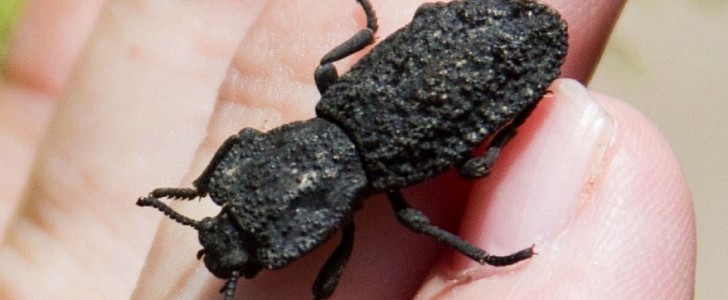Since for ever, man has looked at nature for cues or inspiration to solve his own problems and challenges. It’s called biomimicry.
In the latest attempt at emulating nature, an $8 million project funded by the U.S. Air Force, underway at the Purdue University, is looking at the toughest tiny critter for inspiration on how to build better and stronger planes, vehicles and even buildings. Phloeodes diabolicus, or the diabolical ironclad beetle, can withstand being run over by a car and is pretty much indestructible, thanks to its unique exoskeleton.
The finding of the study have been published in the latest issue of Nature. Researchers note that the elytra of the bug no longer serve as wing case for the membranous hind wings, since it has long lost its ability to fly. Instead, the exoskeleton consists of layers of interlocked chitin, much in the manner of a jigsaw puzzle, which acts almost like an armor.
This makes the beetle impervious to bird pecks, animal stomps or even being run over by a car – a Toyota Camry, to be more specific, which civil engineer Pablo Zavattieri drove over it solely for research purposes. Instead of breaking up at once, the armor of the beetle fractures progressively, in a predictable manner.
“These observations could be applied in developing tough, impact- and crush-resistant materials for joining dissimilar materials,” researchers say. They’re referring to builds using metal, plaster and plastic (aircraft, vehicles and buildings), which could use a similar architecture for more durability and predictability in case of an event because they would fracture at certain key points.
Researchers also looked at other beetles in southern California, performing compression tests to compare durability with the diabolical ironclad beetle. They found it able to withstand greater peak loads because the interlocking structure of its elytra is the most complex.
Based on the model, researchers built joints of metal and composites, which proved to have enhanced strength and toughness, as compared to a commonly used engineering joint.
The finding of the study have been published in the latest issue of Nature. Researchers note that the elytra of the bug no longer serve as wing case for the membranous hind wings, since it has long lost its ability to fly. Instead, the exoskeleton consists of layers of interlocked chitin, much in the manner of a jigsaw puzzle, which acts almost like an armor.
This makes the beetle impervious to bird pecks, animal stomps or even being run over by a car – a Toyota Camry, to be more specific, which civil engineer Pablo Zavattieri drove over it solely for research purposes. Instead of breaking up at once, the armor of the beetle fractures progressively, in a predictable manner.
“These observations could be applied in developing tough, impact- and crush-resistant materials for joining dissimilar materials,” researchers say. They’re referring to builds using metal, plaster and plastic (aircraft, vehicles and buildings), which could use a similar architecture for more durability and predictability in case of an event because they would fracture at certain key points.
Researchers also looked at other beetles in southern California, performing compression tests to compare durability with the diabolical ironclad beetle. They found it able to withstand greater peak loads because the interlocking structure of its elytra is the most complex.
Based on the model, researchers built joints of metal and composites, which proved to have enhanced strength and toughness, as compared to a commonly used engineering joint.

